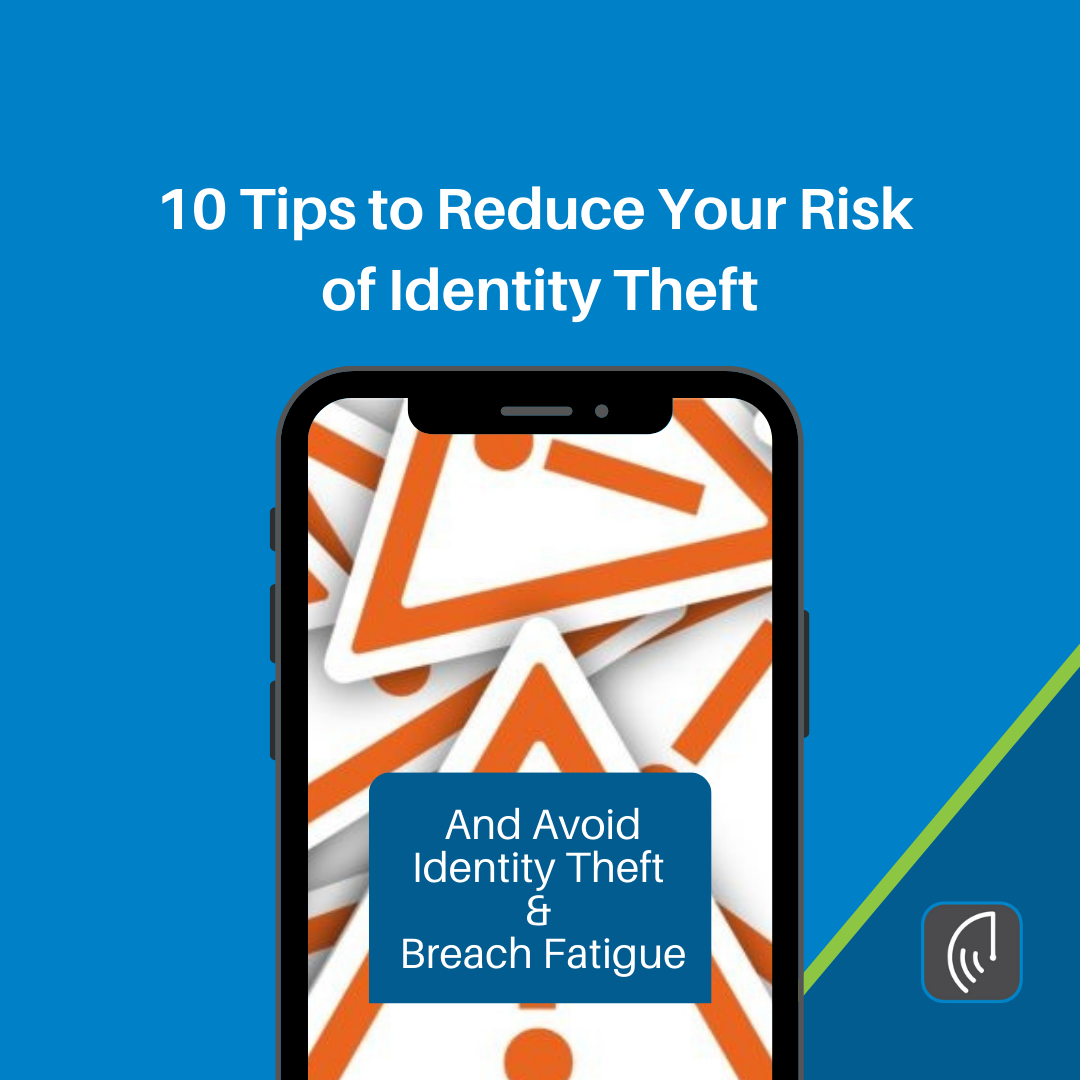Whether you are a consumer or a small-business owner Identity Theft should be top of mind. Protect yourself and your business by using these 10 tips to reduce your risk of identity theft.
First, what is Breach Fatigue or Alarm Fatigue?
Alarm fatigue is when we get desensitized to safety alerts and as a result, ignore or fail to respond appropriately to warnings. Breach Fatigue however is more specific. It’s when small business owners and consumers start to ignore the headlines of identity theft and data breaches. Fatigue desensitizes both business owners and consumers to be less likely to proactively protect themselves against the risks of identity theft.
Be proactive and prepared with these 10 Tips
Being proactive and prepared can reduce your exposure to the risks of identity theft.
Personal privacy
- Be more vigilant and hands-on with your personal-privacy settings. Also, be aware that most apps lack basic security defenses and create some sort of privacy issue.
- Stop ignoring terms and conditions. Read, understand, and use privacy settings and be diligent about your social networking. Beware of fake accounts unless you want to be a partner in your own identity theft.
- Protect your vehicle documents as if they were cash and regularly check for unusual activities after purchasing a vehicle.
- Read and understand the privacy policies of every organization you have a relationship with. Know how your information is protected, saved, analyzed, sold, and/or disclosed.
Identity theft
- Synthetic identity theft and fraud is an emerging threat. Check your credit-bureau report quarterly at no cost through annualcreditreport.com.
- No password is “unbreakable”. Do not make it easy for identity theft criminals by using weak passwords, or the same passwords.
- The best defense against phishing is to be aware that it happens every day. Assume you are being “phished” until you verify the source of an unexpected e-mail or call.
Cybersecurity
- Businesses need to understand that a data breach is inevitable. Your business profits, brand, and reputation depend on your data-breach response plan.
- Create a data breach response plan to safeguard your business against insider threats. Conduct pre-employment background screening, regularly test your business and information-security access controls, and regularly review your data retention policy.
- Cyber insurance may be a good option to help your business minimize today’s cyber-risks. Work with your insurance broker to determine your cyber-risks and the best coverage for your organization.
“the best defense is a good offense”. This strategic principle used in business, sports, and military combat for years and is very relevant for this discussion.
Protect yourself and your business by using these 10 tips to reduce your risk of identity theft. Because being proactive instead of having a passive attitude (e.g., breach fatigue) will help both small business owners and consumers be better prepared against everyday threats.
By Mark Pribish
Practice Leader, Identity Theft and Data Breach Services
